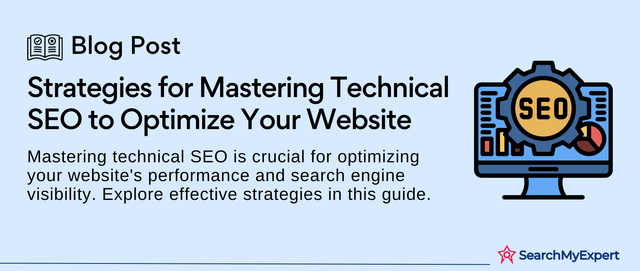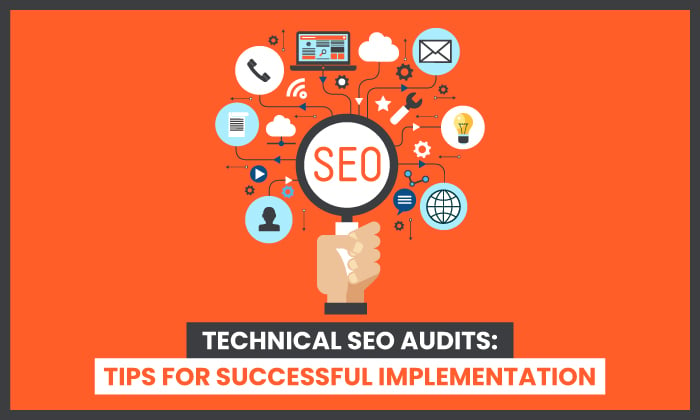Technical SEO involves optimizing website infrastructure for search engines, improving crawlability, indexing, and site speed. It focuses on enhancing technical aspects to boost organic search visibility and rankings.
By addressing issues like mobile-friendliness, schema markup, and XML sitemaps, technical SEO ensures websites are search engine friendly. Proper implementation of technical SEO practices can significantly impact a site’s organic performance and overall user experience, leading to increased organic traffic and better search engine rankings.
It plays a vital role in helping search engines understand and rank a website more effectively, making it essential for any successful SEO strategy.
Understanding Technical Seo
Technical SEO refers to the optimization of your website’s infrastructure and backend to enhance its search engine visibility. It involves addressing factors like website speed, mobile-friendliness, and site architecture to ensure better ranking and user experience. By understanding and implementing technical SEO, you can improve your website’s overall performance and attract more organic traffic.
Understanding Technical SEO Technical SEO is an integral part of optimizing your website for search engines. It focuses on the technical elements that contribute to your website’s performance, indexing, and crawling. By understanding technical SEO, you can ensure that your website is easily discoverable by search engines and provides a seamless user experience. Key Elements of Technical SEO When it comes to technical SEO, several key elements play a crucial role in optimizing your website. These elements include: 1. Website Speed: A fast-loading website is essential for a positive user experience and better search engine rankings. Compressing images, minifying code, and optimizing server response time are some measures to improve website speed. 2. Mobile-Friendliness: With the increasing number of mobile users, optimizing your website for mobile devices is vital. Google gives priority to mobile-friendly websites, so ensure your site is responsive and provides a seamless experience on all devices. 3. Indexing and Crawling: Search engines use bots to crawl and index websites. Optimizing your website’s structure, implementing a sitemap, and using robots.txt file properly can enhance the crawling and indexing of your website. 4. URL Structure: A clear and concise URL structure not only helps search engines understand your website but also improves user experience. Create descriptive and keyword-rich URLs that are easy to read and navigate. 5. Site Architecture: A well-organized site architecture makes it easier for search engines to understand the hierarchy and organization of your website’s content. Ensure that your website has a logical structure with clear categories, subcategories, and internal linking. Common Technical SEO Issues While technical SEO can significantly impact your website’s performance, there are some common issues you need to be aware of and address: 1. Duplicate Content: Duplicate content can confuse search engines and dilute your website’s ranking potential. Use canonical tags, 301 redirects, or robots.txt file to address duplicate content issues. 2. Broken Links: Broken links not only frustrate users but also negatively impact your SEO efforts. Regularly check for broken links and fix them promptly to improve user experience and maintain a healthy link profile. 3. XML Sitemap Errors: XML sitemaps play a critical role in search engine crawling and indexing. Check your sitemap regularly for errors, such as broken URLs or missing pages, and fix them to ensure search engines can properly crawl your website. 4. Page Speed Issues: Slow-loading pages can deter users and lead to poor search engine rankings. Identify and address any page speed issues by optimizing images, reducing server response time, and minifying code. 5. SSL Certificate: Having an SSL certificate is essential for website security and gaining users’ trust. An SSL certificate ensures that data transmitted between your website and users is encrypted. Not having an SSL certificate can negatively impact your website’s rankings. Understanding the key elements and potential issues of technical SEO is crucial for effective website optimization. By addressing these elements and resolving common issues, you can enhance your website’s visibility, user experience, and ultimately improve its rankings on search engine result pages.

Optimizing Website Structure
Url Structure
Creating concise and descriptive URLs helps search engines understand page content better.
Site Navigation
Clear and intuitive site navigation enhances user experience and search engine crawling.
Internal Linking
Strategically linking relevant pages within your site improves SEO and user engagement.
Improving Website Speed
Website speed is a critical factor influencing user experience and search engine rankings. A faster site leads to higher user engagement, lower bounce rates, and better conversion rates. Improving website speed requires attention to technical details, including caching and compression, image optimization, and minifying CSS and JavaScript.
Caching And Compression
Implementing caching mechanisms such as browser caching and server-side caching can significantly reduce load times. Additionally, leveraging compression techniques like GZIP compression helps in transmitting smaller file sizes, leading to faster page loading.
Image Optimization
Optimizing images by reducing their file sizes without compromising quality is crucial. This can be achieved through techniques such as resizing, choosing the right file format (JPEG, PNG, etc.), and using modern image formats like WebP for better compression.
Minifying Css And Javascript
Minifying CSS and JavaScript involves removing unnecessary characters (whitespace, comments, etc.) from the code without altering its functionality. This reduces file sizes and speeds up the downloading, parsing, and execution of these resources, thus improving overall page load times.
Mobile Optimization
Mobile optimization is a crucial aspect of technical SEO, as it focuses on enhancing the user experience for visitors accessing content on mobile devices, such as smartphones and tablets. Ensuring that a website is fully optimized for mobile viewing is essential in improving overall search engine visibility and rankings. Here are some key components of mobile optimization:
Responsive Design
A responsive design ensures that a website layout adapts to different screen sizes and resolutions, providing a consistent and visually appealing experience for users across various devices. This is achieved through the use of fluid grids and flexible images, allowing content to resize and restructure seamlessly for optimal display on any screen.
Mobile-friendly Testing
Conducting mobile-friendly testing is essential to identify and address any potential issues that could hinder the user experience on mobile devices. By utilizing tools such as Google’s Mobile-Friendly Test, website owners can assess the mobile compatibility of their site, ensuring that it meets the necessary criteria for optimal performance and usability on mobile platforms.
Accelerated Mobile Pages (amp)
Implementing Accelerated Mobile Pages (AMP) can significantly improve the loading speed and overall performance of web pages on mobile devices. AMP is a framework that creates lightweight versions of web pages, prioritizing speed and accessibility, which can have a positive impact on user engagement and search rankings for mobile searches.
Sitemap And Robots.txt
A sitemap is a list of pages on a website; it helps search engines find and index content.
By creating a sitemap, one can organize all web pages and ensure search engines can easily navigate the site.
Robots.txt is a file that tells search engine crawlers which pages or files not to crawl.
It’s crucial for directing search engines and protecting sensitive information on a site.
When setting up a robots.txt file, ensure it’s properly configured to block irrelevant content.

Fixing Technical Seo Issues
The field of technical SEO involves various techniques and strategies aimed at improving the technical aspects of a website in order to enhance its visibility and ranking on search engine results pages (SERPs). When it comes to fixing technical SEO issues, there are several key areas to focus on. By identifying and addressing crawl errors, resolving duplicate content, and handling broken links, you can optimize your website for search engines and ensure a seamless user experience.
Identifying And Fixing Crawl Errors
Crawl errors occur when search engine bots encounter difficulties while navigating and indexing your website. These errors can negatively impact your website’s visibility on SERPs. By identifying and addressing crawl errors, you can ensure that search engine bots can properly access and index your website’s content, leading to improved visibility and ranking.
To identify crawl errors, you can utilize tools such as Google Search Console. This handy tool provides a comprehensive report on any crawl errors detected on your website. Once you have identified the crawl errors, you can take the necessary steps to fix them. These steps may include:
- Checking and optimizing your website’s robots.txt file to allow search engine bots to crawl important pages and avoid unnecessary ones.
- Addressing any broken or redirected URLs that may be causing crawl errors.
- Reviewing and resolving any server errors, such as 404 or 500 errors, which might hinder search engine bots from accessing your website’s content.
Resolving Duplicate Content
Duplicate content refers to identical or very similar content that appears on multiple pages of your website or across different websites. Search engines frown upon duplicate content as it can lead to confusion in determining the most relevant page to rank for a particular search query.
To avoid duplicate content issues, you should:
- Create unique and original content for each page of your website, ensuring that they provide value and serve a specific purpose.
- Use canonical tags to indicate the preferred version of a webpage when similar versions exist.
- Implement proper 301 redirects for outdated or duplicate pages, redirecting them to the most relevant and current page on your website.
Handling Broken Links
Broken links, also known as dead links, occur when a hyperlink leads to a webpage that no longer exists or has been moved. These links can frustrate users and hinder search engine bots from efficiently crawling your website’s content.
To handle broken links effectively, you can:
- Regularly perform link audits to identify broken links on your website.
- Replace broken links with updated and relevant links, ensuring a seamless user experience.
- Set up custom 404 pages to redirect users to helpful resources and prevent them from leaving your website.
Monitoring And Reporting
Monitoring and reporting are essential aspects of technical SEO. By regularly monitoring and reporting on various metrics, you can ensure that your website is performing optimally and identify areas for improvement. This is crucial for staying ahead of the competition and maintaining a strong online presence.
Utilizing Seo Auditing Tools
One effective way to monitor and report on the technical aspects of your website is by utilizing SEO auditing tools. These tools provide in-depth analysis and comprehensive reports on various SEO factors, such as page speed, broken links, and HTML tags. By using these tools, you can easily identify any issues that might be affecting your website’s performance and take the necessary steps to address them.
Tracking Performance Metrics
Tracking performance metrics is another crucial aspect of monitoring and reporting in technical SEO. By keeping an eye on metrics such as organic traffic, keyword rankings, and bounce rates, you can gain valuable insights into how well your website is performing in search engine results. This information allows you to make data-driven decisions and implement effective strategies to improve your website’s visibility and attract more organic traffic.
Regularly Reviewing And Adjusting
To ensure that your website stays optimized for search engines, it is important to regularly review and adjust your SEO strategy. By reviewing your website’s performance metrics and analyzing the reports from SEO auditing tools, you can identify any areas that need improvement and make the necessary adjustments. This could involve updating your website’s meta tags, optimizing content for specific keywords, or improving site speed. By staying proactive and continuously optimizing your website, you can maintain a strong online presence and keep attracting organic traffic.

Frequently Asked Questions Of What Is Technical Seo?
What Is Mean By Technical Seo?
Technical SEO involves optimizing website structure, code, and performance to improve search engine visibility and rankings.
What Is Technical Seo Vs On-page Seo?
Technical SEO refers to the optimization of technical aspects of a website, like site speed and mobile-friendliness. On-page SEO, on the other hand, focuses on optimizing individual web pages, including content and keywords. Both are crucial for improving a website’s search engine rankings.
Is Technical Seo Difficult?
Mastering technical SEO can be challenging, but with practice and learning resources, it becomes manageable.
How To Do Technical Seo Step By Step?
To do technical SEO step by step, start by conducting a thorough website audit. Next, optimize site speed and mobile responsiveness. Then, focus on keyword research and optimization. Improve website architecture and ensure proper indexing. Finally, monitor and maintain SEO performance with regular reviews and updates.
Conclusion
Understanding technical SEO is crucial for optimizing website performance. By focusing on factors like site speed, mobile-friendliness, and schema markup, you can enhance your online presence. Implementing technical SEO best practices can lead to higher search engine rankings and improved user experience.
Stay informed and regularly monitor your site to stay ahead in the digital landscape.




